Ann Arbor, Mich., Commission Endorses Public Power Utility Study
December 16, 2021
by Paul Ciampoli
APPA News Director
December 16, 2021
The Ann Arbor, Mich., Energy Commission on Dec. 14 unanimously adopted a resolution recommending that the Ann Arbor City Council authorize a municipal electric utility feasibility study.
The vote culminates a nearly year-long community discussion about exploring the public power option as a way to power Ann Arbor’s local electric grid with 100 percent renewable energy, a core strategy of the city’s A2Zero climate action plan.
Ann Arbor for Public Power, a nonprofit grassroots organization, has been leading the effort. The group commissioned and released a study outlining a legal roadmap to municipalization, made multiple presentations to Energy Commission and to various community organizations, and collected over 1,200 signatures from Ann Arbor residents supporting a muni feasibility study.
There are currently 41 Michigan cities and towns served by public power utilities.
The resolution includes a recommendation that the city ensure a just transition for workers in its energy decisions.
The resolution also asks Council to move forward on a Sustainable Energy Utility (SEU). An SEU is a city-owned nonprofit that helps residents make homes more energy efficient, install solar panels, and convert from gas appliances to electric, by providing an alternative to investor-owned DTE Energy. It also seeks to convert buildings to self-powering microgrids.
Ann Arbor for Public Power said it looks forward to working with the City Council in January on its feasibility study resolution.
“We will continue promoting community discussion around municipalization in the coming year, as we work towards an eventual voter referendum to establish a city-owned electric utility to replace DTE Energy,” the group said.
For more information, go to annarborpublicpower.org.
For additional information about municipalization and related resources provided by the American Public Power Association, click here.
Public Power Utilities Make Progress In Power Restoration In Wake Of Tornadoes
December 15, 2021
by Paul Ciampoli
APPA News Director
December 15, 2021
Public power utilities this week made steady progress in restoring power to public power communities affected by tornadoes that recently swept through a number of states.
The tornadoes cut a destructive path through Kentucky, Missouri, Arkansas, Illinois, Mississippi, and Tennessee.
Utilities in the regions affected by the destructive storms have sent utility crews to help restore power where electric infrastructure was damaged and are working with others in the electric sector to identify unmet needs.
“Although full restoration may take over a week, we do not anticipate it taking months. After power is restored, we will make more permanent fixes on the system,” Kentucky public power utility Bowling Green Municipal Utilities (BGMU) reported on Dec. 14.
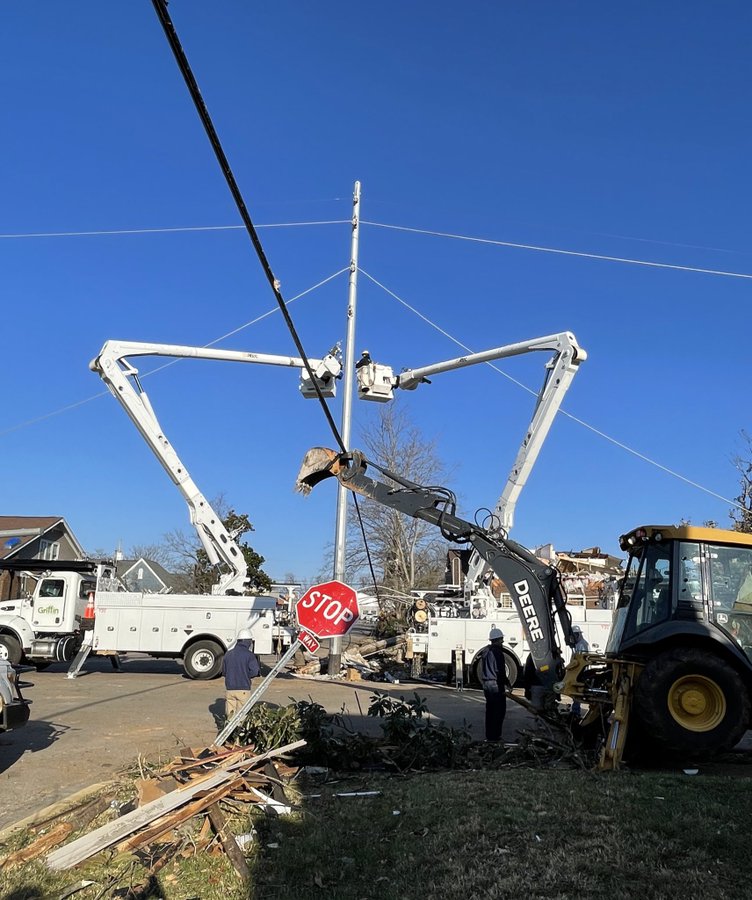
On Dec. 13, BGMU noted that it started with about 24,000 customers out of power. “We are down to about these 4,000, and those will be the most difficult due to the destruction in the area,” it said.
A large number of crews from public power utilities in Georgia and Tennessee have been sent to help BGMU with its restoration efforts.
Another Kentucky public power utility, Princeton Electric Plant Board, on Dec. 11 reported that approximately 80 poles and several miles of conductor were damaged from a tornado necessitating complete replacement in order to restore power to all affected customers.
Crews from Kentucky public power utilities Paducah Power System, Frankfort Plant Board, Owensboro Municipal Utilities, and Groves Construction have deployed to assist Princeton with its restoration efforts.
“We believe that all individual customers who can be restored have been restored,” Princeton EPB reported on Dec. 15.
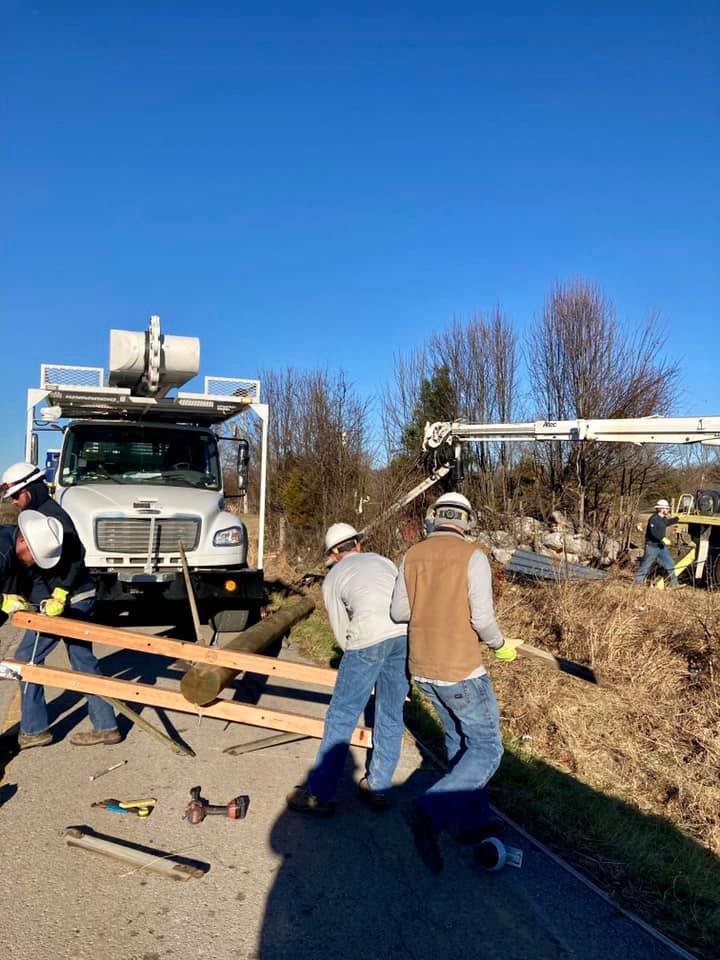
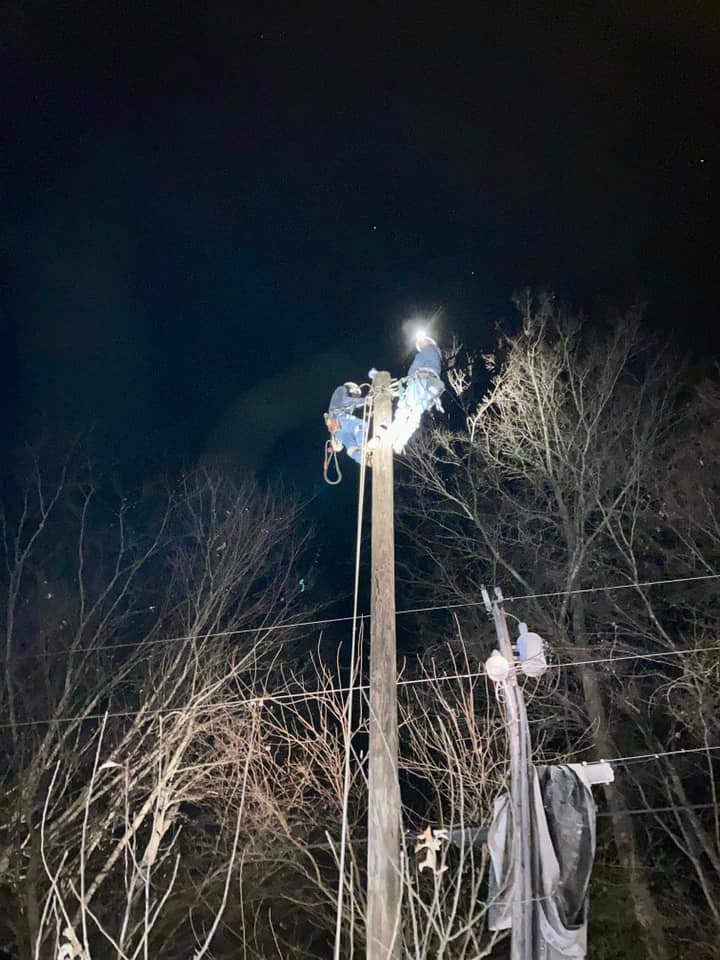
In Mayfield, Ky., public power utility Mayfield Electric & Water Systems (MEWS) reported that its electric substation took a direct hit.
On Dec. 14, the utility reported that after evaluating the substation, the damage is worse than initially expected and that energizing transmission lines may not occur for 7-10 days. MEWS engineers are working with West Kentucky Rural Electric on an alternate solution to tie in MEWS circuits to the Ed Walker Substation.
President Joseph Biden on Wednesday traveled to Kentucky where he surveyed storm damage in Mayfield.
“What I’ve seen so far is a group of incredible people pulling together, helping each other,” Biden said. “And they’re hopeful. And we’re going to stay until this gets finished and totally reconstructed.”
The Tennessee Valley Authority (TVA) and local power company personnel have restored power to more than 226,000 consumers since weekend storms caused outages across a wide area of northwest Tennessee and western Kentucky, TVA reported on Dec. 14.
On Tuesday, crews restored another customer connection point — the interface between TVA’s transmission system and local power company distribution system — serving Pennyrile Rural Electric Cooperative Corporation, as well as a connection point for one of TVA’s direct-served industrial customers. Since Saturday, 18 of the 21 impacted connection points serving seven different local power companies have been restored.
TVA on Dec. 14 said its crews were focused on returning the final three connection points to service, which impact areas near Mayfield, Ky., and Lexington, Tenn. In both areas, storms damaged transmission towers that must be cleared and rebuilt before power lines can be safely re-energized. In addition, extensive damage to the MEWS’ own distribution network may slow restoration effort to residents in that area, TVA said.
TVA on Dec. 15 reported that more than 8,000 additional consumers impacted by weekend storms now had electric power restored to their homes and businesses over the past 24-hours through the combined efforts of TVA and local power company personnel working in northwest Tennessee and western Kentucky.
As of noon on Wednesday, about 19,000 remained without power in the region, down from more than 254,000 that lost service in the storms’ wake.
More than 160 TVA line workers, additional contractor crews and TVA Aviation Services helicopter crews remain in the field working to restore power. Hundreds of additional TVA employees are working across the region to support the field teams’ efforts.
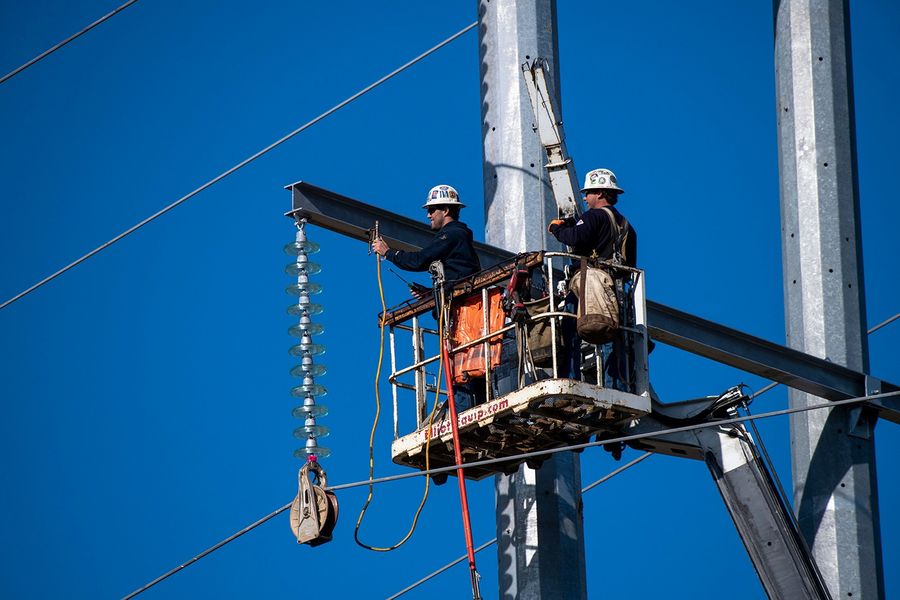
The region’s public power system is a partnership between TVA and local power companies. TVA’s transmission system delivers power to connection points with local power companies, whose own distribution systems supply power directly to homes and businesses. Both systems must be operational to safely provide reliable electricity.

TVA has noted that the storms were the most destructive to impact the region since the April 2011 tornado outbreak.
Due to the extent of the damage in some areas, TVA is unable to provide any specific time for full restoration. The need to repair both TVA’s transmission system and local power company distribution systems may lead to longer restoration times.
Tennessee public power utility Nashville Electric Service (NES) on Dec. 15 noted that tornadoes and severe weather greatly impacted the service area of NES on Dec. 11, knocking out power to nearly 95,000 customers at its peak. Crews worked around the clock to restore power to those customers and to replace more than 130 broken power poles that were damaged as a result of storms.
Within five days, NES repaired all major infrastructure circuits and restored power to every customer. “NES was prepared to handle this storm given recent events that caused massive outages in the service area, like the 2020 Tornado, Derecho windstorm and downtown Christmas bombing,” the utility said.
California PUC Proposes Net Metering Reforms To Support Storage, Social Equity
December 15, 2021
by Peter Maloney
APPA News
December 15, 2021
The California Public Utilities Commission (CPUC) this week issued a proposal that would reform the state’s net metering rules for investor-owned utilities and encourage their residential customers to combine energy storage with solar power systems.
The “Proposed Decision determines that NEM [Net Energy Metering] rules must be modernized to incentivize customers to install storage paired with rooftop solar to help California meet its net peak shortfall and ensure grid reliability,” the commission said in an announcement on the proposed decision.
The proposed decision also includes a grid participation charge and provisions aimed at making access to renewable energy more equitable.
While CPUC decisions apply only to investor owned electric and natural gas utilities and not public power utilities, the commission’s effort has a broad impact on the state’s electric grid.
According to the commission, its NEM policies have “enabled 1.3 million customers to install roughly 10,000 megawatts of customer-sited renewable generation, almost all of which is rooftop solar” and have resulted in a reduction of midday demand on the grid by as much as 25 percent. With a total of 25 gigawatts (GW) of installed solar power, needs have shifted. “It is now essential to address grid reliability shortfalls during ‘net peak’ hours,” the commission said.
With its high penetration of solar power, California typically has a surfeit of renewable energy in the middle of the day that falls off as the sun sets and peak demand rises in the evening, requiring sources such as gas-fired power plants to ramp up quickly to fill the peak demand shortfall.
The proposed decision would be the third reform of California’s net metering regime since it was mandated by a 2013 state law, Assembly Bill 327. The CPUC revised the original program in 2016, creating NEM 2.0.
The proposed decision would revise the CPUC’s current NEM rules and create a Net Billing Tariff that the commission says would provide more accurate price signals that would promote greater adoption of customer-sited storage with the aim of helping the state decrease its dependency on fossil fuels during the early evening hours.
Under the new system, a customer would be allowed to “oversize” their solar system to cover 150 percent of their historical load in order to enable future electrification.
Net billing customers would be required to sign up for electric rates with high differentials between peak and off-peak prices in order to incentivize energy conservation or the use of stored solar energy during the net peak window of 6 p.m. to 9 p.m.
The proposal would also move residential customers from annual billing to monthly billing in an effort to help them avoid unexpectedly large bills at the end of their 12-month billing period.
The proposed decision would also establish a Storage Evolution Fund to provide storage rebates to existing NEM 2.0 customers who transition to the Net Billing Tariff in the next four years.
And the proposal would transition residential NEM 1.0 and 2.0 customers, except for low-income customers, to the Net Billing Tariff after 15 years of being interconnected to the electric grid. The aim, the commission said, is to incentivize the adoption of energy storage and “reduce the costs paid by other ratepayers by billions of dollars.”
The proposed decision also includes a bill credit for net billing customers to ensure they can pay for a solar-plus-storage energy system in 10 years or less through electric bill savings. The monthly market transition credit would start at up to $5.25 per kilowatt (kW) for residential solar-plus-storage and solar-only systems and would step down by 25 percent a year for four years. Once locked in, the credit lasts for 10 years.
In its proposed decision, the CPUC also aims to address disparities that have come about because of earlier iterations of its NEM policies. The new net metering regime would adopt a monthly residential Grid Participation Charge of $8 per kW of installed solar in an effort to capture residential adopters’ fair share of costs to maintain the grid and fund public programs.
“An independent third-party evaluation of NEM 2.0 found that its costs substantially exceed its benefits as residential NEM 2.0 participants only pay 9 to 18 percent of what it costs their utilities to serve them, even considering the value of the energy produced by their NEM systems,” according to the CPUC. Meanwhile, ratepayers without net metered solar systems, many of whom are low income, pay “significantly higher electricity rates due to NEM.”
Households without NEM solar systems are estimated to pay $67 to $128 more per year due to the costs of the NEM programs and those costs are likely to increase without reforms, according to a report from the Public Advocates Office,
Under the new NEM regime, California’s investor-owned utilities could expect more revenue to cover grid access and maintenance costs. The commission estimates the grid participation charge less the market transition credit would net a monthly fixed charge in 2023 of $6.38 per kilowatt for customers of Pacific Gas and Electric (PG&E), $8/kW for San Diego Gas and Electric (SDG&E) customers, and $4.41/kW for Southern California Edison (SCE) customers. For a 5kW solar system that would translate into fixed monthly charges of $31.90 for PG&E residential customers, $40 for SDG&E customers, and $22.05 for SCE customers.
In further support of social equity, the proposed decision creates an equity fund with up to $600 million to improve low-income customer access to distributed clean energy programs. A stakeholder process will determine the allocation of funds, which could go toward incentives for distributed storage, community solar in low-income and disadvantaged communities, or other low-income clean energy programs with strong consumer protections. Additional measures aim to provide incentives for distributed solar-plus-storage for low-income and tribal households, including an exemption from the Grid Participation Charge.
The proposed decision will be on the CPUC’s Jan. 27, 2022, voting meeting agenda.
Long Island Power Authority Unveils Roadmap For New Residential Time Of Day Rate
December 15, 2021
by Paul Ciampoli
APPA News Director
December 15, 2021
The Long Island Power Authority (LIPA) and the New York State Solar Energy Industries Association (NYSEIA) on Dec. 14 unveiled a roadmap to develop a modern standard residential rate for electric customers on Long Island and the Rockaways.
The new Time of Day (TOD) rate, which will be developed and adopted over the next three years with extensive stakeholder input, will allow customers to save money by using cheaper electricity during off-peak hours, LIPA said.
LIPA said it remains committed to leading deployment of solar in New York and achieving New York Gov. Kathy Hochul’s 10 gigawatt by 2030 target.
As part of this proposal, LIPA will phase in the Customer Benefit Contribution (CBC) for net-metered customers, which exists in every other part of the state and provides funding for environmental and low-income assistance programs, over three-years while the new TOD rate is developed.
LIPA will also fund an additional “declining block” of incentives for residential solar projects paired with an energy storage system that participate in LIPA’s Dynamic Load Management program.
“Time of Day rates are an innovative way to help customers save money and the environment. Customers will have more control of their electric bills, carbon emissions from the electric grid will decline, and those that adopt electric vehicles, efficient heating, or energy storage will save even more money.” said LIPA CEO Thomas Falcone. “The three-year phase-in of the Customer Benefit Contribution will provide new solar customers on Long Island with a generous amount of time to become part of an important environmental and low-income assistance program that is already in place in the rest of the state.”
LIPA pointed out that many utilities have introduced TOD rates, which better reflect the cost of providing electricity.
“Reducing electric use during a few peak hours in the summer reduces LIPA’s need to buy energy from sources that are less environmentally friendly and more expensive. The new Time of Day rate will provide lower rates when cleaner power is abundant and higher prices during the few peak hours when power is more carbon intensive,” LIPA said.
Developing and implementing new or enhanced electric rate designs is a key part of achieving New York’s Climate Leadership and Community Protection Act goal of a carbon-free electric grid by 2040, it went on to say.
Time of Day rates will bring even greater savings for solar customers with residential energy storage, allowing batteries to power homes during summer peak hours and use grid-energy during cheaper off-peak hours. Time of Day pricing also reduces cost for customers with electric vehicles and heat pumps, allowing customers to use cheaper off-peak hours for extra savings.
TOD pricing will not be mandatory. Customers will still have the option of a fixed rate. LIPA said it will deploy programs, services, and tools to help customers minimize summer peak usage and bills.
According to LIPA, utilities that have deployed a standard TOD rate have seen peak usage decline 6-8% or more during the summer months, as customers shift more of their usage to off-peak times of day. The savings are passed along to customers through lower TOD rates.
LIPA said that the results on Long Island and the Rockaways will inform future statewide utility rate design, as the New York Public Service Commission takes into consideration differing levels of Advanced Metering Infrastructure deployment and other market characteristics in the rest of New York.
The CBC charge, which exists across New York State and will be phased in on Long Island and the Rockaways over three years, was developed through a public stakeholder process led by the New York Department of Public Service (DPS) and will ensure that all customers contribute proportionally to the cost of providing important customer benefit programs, such as energy efficiency, heat and transportation electrification, renewable energy, and low-income bill discount programs for all customers.
Under this new agreement, the full CBC charge for new net metered LIPA customers will phase in over three years, while a new standard TOD rate is developed.
LIPA and NYSEIA will also explore additional rate designs for the CBC that similarly fund customer benefit programs and are complimentary with the new TOD rate.
Among public power utilities that have implemented a TOD rate is California’s SMUD. Click here for additional information about SMUD’s TOD rate.
A TOD rate is also available to residential utility customers of the City of Fort Collins, Colo.
Meanwhile, Seattle City Light launched a residential TOD Rate Pilot Program that runs through December 2022 or when opt-in TOD rates are available to all customers.
Also in Washington State, Snohomish County PUD earlier this year launched its “FlexTime” pilot program.
FlexTime pilot participants earn incentives and save money by using energy when it’s less expensive, including a lower rate on nights, weekends and federal holidays. Participants operate under a new fixed-rate design year-round that rewards them to use energy at off-peak hours and avoid using energy at on-peak hours. During the winter (November–February), on-peak hours will be billed at a higher rate.
The peak rate will be applied when the PUD’s grid sees high demand during weekday winter mornings 7 to 10 a.m. and evenings 5 to 8 p.m., from November 1 through February 28. There are two winter seasons during the pilot. In all other months, there is a discount and standard (or mid-peak) rate, but no on-peak rate.
The FlexTime rate plan offers participants a tiered and seasonal rate plan with different rates for electricity based on the time of the day it is used.
Participants will receive a 20% discount during nights, weekends and federal holidays, while being charged a peak rate during three-hour periods in the morning (7 to 10 am) and evening (5 to 8 pm) on weekdays in the winter (November through February). Discount and peak hours are already defined, so it’s easier to make little tweaks that add up to big annual savings, the PUD noted.
After the 20% discount, the nights and weekend rate will be 7.99 cents/kWh and the peak rate will be 21.37 cents/kWh. All other hours will be billed at the PUD’s standard rate of 10.4 cents/kWh.
Easton Utilities President and CEO Hugh Grunden Recognized For Leadership
December 15, 2021
by Paul Ciampoli
APPA News Director
December 15, 2021
The Maryland Daily Record has selected Hugh Grunden, President and CEO of Maryland public power utility Easton Utilities, as an Icon Honors Award recipient.
Established in 2017, Icon Honors recognizes Maryland business leaders, over the age of 60, for their notable success and demonstration of strong leadership within and outside their fields.
The honorees have moved their businesses and the state of Maryland forward by growing jobs and making a difference in the community.
Under Grunden’s direction, Easton Utilities has become a competitive, multi-service provider committed to customer satisfaction, solving rural broadband issues in Talbot County, encouraging the use of renewable energy and resource conservation, and maintaining critical infrastructure for reliability.
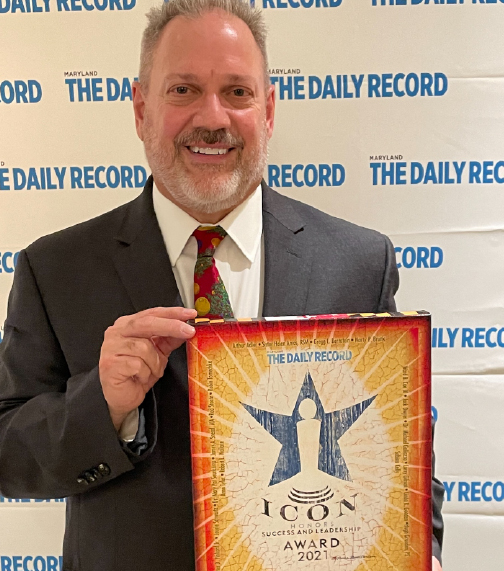
Easton Utilities is a community-owned, not-for-profit utility and telecommunications company operating the Electric, Natural Gas, Water, Wastewater, Cable Television, and Internet services for the Town of Easton and portions of the surrounding area.
The Daily Record publishes a print and online edition five days a week.
TVA Executives Detail Efforts To Create Visibility Tied To EVs, Renewable Energy
December 15, 2021
by Paul Ciampoli
APPA News Director
December 15, 2021
Executives with the Tennessee Valley Authority (TVA) recently detailed how TVA is taking steps to create visibility tied to the impact of electric vehicles (EVs) on the power system and EV needs for electricity consumption, as well as where renewable energy resources are being developed.
Laura Duncan, TVA’s Manager for Commercial Energy Solutions, and Drew Frye, TVA’s Manager for Commercial Energy Services, made their comments on Dec. 2 during the American Public Power Association’s Public Power Forward Virtual Summit.
The TVA officials participated in a panel that detailed how utilities locate resources — from customers with EVs to industrial customers with a solar farm — and account for new load from charging stations.
“We have seen an uptick over the last year or so in EV adoption,” Frye said. EV sales in the TVA region have grown by a compound average of 49% annually over the past three years.
“It’s something we’re tracking and understanding what the impacts could be to TVA and the 153 local power companies, munis and cooperatives that distribute TVA’s electricity,” he said.
TVA plans for the future “understanding that there’s a lot of investment going into making electrified vehicles. Pretty much every automaker has committed” to some kind of electrification strategy,” Frye said.
TVA is forecasting more than 200,000 EVs in its service territory by 2028 and 780,000 by 2035, which would add 2% to TVA’s total energy demand.
Smart Charge Nashville Project
Frye offered details on a project called Smart Charge Nashville in an effort to understand the impact of EVs on the power system and their needs for electricity consumption. TVA partnered with public power utility Nashville Electric System (NES), among others.
Under the project, EV drivers were incentived to plug in data loggers into their cars. “That really gave us all of the information off of the vehicle,” he noted.
“We used this project to do kind of a baseline EV load shape for the first year,” Frye said. The second year involved testing out different EV charging load management strategies “to see if we could change charging behaviors and therefore potentially change the impacts for the local distribution system or for TVA for charging requirements.”
As far as what the project discovered in terms of charging patterns, “we learned that almost all charging happens at home – in a garage or in a parking lot. Upwards of eighty percent, depending on what electric vehicle type that they had. And when they had access to charging at work and at home, close to ninety percent of charging happened at those two locations.”
He said that relatively speaking, there was a small amount of charging occurring over the public charging network and even smaller amounts of that charging happening at fast chargers along highways.
As to the time of the day that the electric vehicles charged, Frye said it was “all over the map.” He said that some EVs “were going three days before they charged up again,” while others were charging up every night using a 120-volt charger “which was basically one kilowatt for the whole night.”
Frye said that “what we found out is diversification of charging is really our friend and the peaks of when most electric vehicles are charging simultaneously really start to pop up on high driving days like the day before holidays.”
Meanwhile, Duncan provided details about TVA’s renewable energy efforts. She noted that today, the power that TVA delivers is nearly 60 percent carbon free, which includes nuclear power, “and in the last 20 years we’ve facilitated over 4,000 solar installations and we’ve brought over $2 billion to the Valley through our renewable investments and provided nearly 1.5 million people access to community solar.” These efforts are being done in partnership with local power companies.
“We are planning to add 10,000 megawatts of solar by 2035,” Duncan said.
“One of our key lessons learned in developing and offering renewable programs in a dynamic market is there’s really not a one size fits all solution for customers that are interested in renewable energy,” she noted. “We’ve developed a suite of flexible solutions that will best meet the needs of a wide range of customers.”
TVA’s customers “all of have unique sustainability and carbon goals,” Duncan said. Solutions can include rooftop solar, renewable energy certificate purchase programs, and new solar projects.
“These solutions really facilitate partnerships that help us to further develop future solutions” and help to ensure visibility and coordination on where this renewable energy is being developed “on our system – both for TVA and at the distribution scale for the local power companies.”
Federal Government, Partners Respond To Apache Software Vulnerability
December 14, 2021
by Paul Ciampoli
APPA News Director
December 14, 2021
The Cybersecurity and Infrastructure Security Agency (CISA) and its partners, through the Joint Cyber Defense Collaborative, are responding to active, widespread exploitation of a critical remote code execution vulnerability in Apache’s Log4j software library.
Specifically, CISA flagged versions 2.0-beta9 to 2.14.1, known as “Log4Shell” and “Logjam.”
Log4j is very broadly used in a variety of consumer and enterprise services, websites, and applications, as well as in operational technology products, to log security and performance information. An unauthenticated remote actor could exploit this vulnerability to take control of an affected system.
Apache released Log4j version 2.15.0 in a security update to address this vulnerability.
“However, in order for the vulnerability to be remediated in products and services that use affected versions of Log4j, the maintainers of those products and services must implement this security update,” CISA noted.
CISA said that users of such products and services should refer to the vendors of these products and services for security updates.
Given the severity of the vulnerability and the likelihood of an increase in exploitation by sophisticated cyber threat actors, CISA urged vendors and users to take several actions.
Vendors should immediately identify, mitigate, and patch affected products using Log4j and inform their end users of products that contain this vulnerability and strongly urge them to prioritize software updates, CISA said.
With respect to affected organizations, CISA said such organizations should “enumerate external-facing devices that have Log4j” and ensure security operations center actions alerts on these devices and install a web application firewall with rules that automatically update.
In addition, affected organizations should review CISA’s upcoming GitHub repository for a list of affected vendor information and apply software updates as soon as they are available.
CISA also provides guidance for organizations running products with Log4j.
Additional information is available on CISA’s website here, while details about the Joint Cyber Defense Collaborative are available here.
Nebraska Public Power District Board Approves Net-Zero Carbon Emissions Goal
December 14, 2021
by Paul Ciampoli
APPA News Director
December 14, 2021
Nebraska Public Power District’s (NPPD) Board of Directors on Dec. 13 approved a goal to achieve net-zero carbon emissions from generation resources by 2050.
In the process of developing this goal, NPPD worked with external consultants to explore potential scenarios for getting its generation mix to net-zero carbon emissions, garnered extensive feedback from wholesale customers, hosted five public information forums across the state, and received thousands of responses to a survey on the topic.
NPPD currently serves its Nebraska customers with roughly 65 percent carbon free energy resources, due in large part to the Cooper Nuclear Station, in addition to hydro, wind and solar generation.
NPPD provides energy to customers in 86 of Nebraska’s 93 counties, including more than 92,000 residential, commercial and industrial customers in 79 Nebraska communities. NPPD also has wholesale power supply agreements with 38 municipalities and 23 rural public power districts and/or cooperatives.
More information and resources can be found at https://www.nppd.com/powering-nebraska/powering-our-future.
Other public power utilities in Nebraska have launched similar efforts.
Omaha Public Power District is examining how it can make progress toward its goal of net-zero carbon production by 2050, while Lincoln Electric System has set a goal of eliminating its carbon dioxide production from its generation portfolio by 2040.
Public Power Utilities Work To Restore Power In Wake Of Tornadoes
December 13, 2021
by Paul Ciampoli
APPA News Director
December 13, 2021
Public power utilities in several states are working to restore power in the wake of a string of deadly tornadoes that hit communities on the evening of Friday, Dec. 10.
“The devastation caused by tornadoes in several states last night is heartbreaking,” said Joy Ditto, President and CEO of the American Public Power Association (APPA), on Dec. 11. “My thoughts and prayers go out to the families who have lost their loved ones in this tragedy. I also greatly appreciate the work of the first responders still helping to rescue those in need.”
The tornadoes cut a destructive path through Kentucky, Missouri, Arkansas, Illinois, Mississippi, and Tennessee.
Utilities in the regions affected by the destructive storms have started to send utility crews to help restore power where electric infrastructure was damaged and are working with others in the electric sector to identify unmet needs.
President Biden on Dec. 11 noted that he had already spoken several times with the head of the Federal Emergency Management Agency (FEMA) and that FEMA has deployed emergency response personnel to these states, search-and-rescue teams, water and other supplies.
“FEMA is on the ground working with each of the states to assess the damages and focus on federal support where it is needed most and how we can get there most rapidly,” Biden said.
Biden has approved the emergency declaration that was requested by Kentucky Governor Andy Beshear. “That’s going to accelerate federal emergency assistance for Kentucky right now, when it’s urgently needed,” the President said.
In Mayfield, Ky., public power utility Mayfield Electric & Water Systems reported that its electric substation took a direct hit. “We do not have transmission to the substation. The restoration time frame is unknown, however we do expect outages to last days and possibly even week.”
On Monday, Dec. 13, Mayfield Electric & Water Systems reported that repairs to the substation were ongoing. “Crews are clearing lines, repairing poles, and hope to have 3 circuits ready by 12/15,” the utility said on its Facebook page.
A candle factory in Mayfield that collapsed with workers inside will likely lead to the most fatalities of the severe weather event, according to Kentucky Gov. Andy Beshear, the Louisville Courier Journal reported.
On Sunday, Dec. 12, Kentucky public power utility Bowling Green Municipal Utilities reported that crews were “already hard at work for what will be another very long day.” The utility also gave thanks to a number of public power utilities and communities for helping it with restoration efforts:
- Gallatin Department of Electricity (Gallatin, Tenn.)
- Glasgow EPB (Glasgow, Ky.)
- City of Franklin, Tenn.
- City of Springfield, Tenn.
Electric Cities of Georgia (ECG), which serves as state coordinator in the American Public Power Association’s mutual aid network, sent personnel to Bowling Green to assist in restoration efforts, along with the following public power communities in Georgia that sent crews to help Bowling Green:
- Calhoun
- Marietta
- Acworth
- Thomasville
- Cartersville
- Covington
- Dalton
- East Point
- Griffin
- LaGrange
- Newnan
- Cairo
- West Point
All of the communities are members of ECG, which is a non-profit organization providing strategic and technical services to 52 public power communities with utility operations.
Meanwhile, The Frankfort Plant Board (FPB), a public power utility located in Frankfort, Ky., reported that it was sending a crew to help restore power to the city of Princeton, Ky.

An FPB crew of eight electric linemen is loading up an auger truck, two bucket trucks and a foreman’s pickup truck with food, water and as many materials as they can haul, FBP reported Dec. 11.
“As our hearts break to see the devastation that is unfolding in west Kentucky, our FPB crews are going to do what we do best – get the lights back on,” said FPB Communications Director Cathy Lindsey. “This is what we can do today to help.”
FPB is part of a mutual aid network through the Kentucky Municipal Utilities Association (KMUA). KMUA coordinates with APPA, which organizes crews from the more than 2,000 public power utilities members to send to areas in need.
“This network makes resources rapidly available during a disaster and ensures that power is restored to those in need as quickly as possible while keeping outside entities from price gouging for labor and materials,” FPB noted.
The Tennessee Valley Authority (TVA) on Dec. 12 reported that early Sunday morning, crews restored power to local power company connection points near Glasgow, Ky., and Lexington, Tenn. “Devastating tornados caused widespread damage in portions of western Kentucky, and middle Tennessee early Saturday morning,” TVA reported.

Over the weekend, TVA said that over 60 high-voltage transmission structures in Kentucky and Tennessee had been damaged, the most devastating storms since the 2011 tornado outbreak that affected Alabama, Mississippi and Tennessee. “Our crews are assessing damage and mobilizing for repairs,” TVA said.
On Monday, Dec. 13, TVA said its personnel continued to work to repair damaged power transmission equipment in the areas impacted by the recent severe weather. Power has been restored to more than half of those initially affected.
Initial damage assessments to TVA’s power system were completed on Sunday and confirmed that the weekend’s storms were the most destructive to impact the region since the April 2011 tornado outbreak, with at least 100 transmission towers and poles were damaged or destroyed and 29 TVA transmission lines were knocked out of service.
Immediately after the storms, more than 20 customer connection points – the interface between TVA’s system and local power companies – were offline and more than 250,000 electric users were without power.
The safety of TVA’s team members, emergency responders and the public remain the highest priority, TVA said.
Since deploying immediately after the storms passed, TVA and local power company repair crews have made significant progress:
- 12 customer connection points have been restored in northwestern Tennessee and western Kentucky, reducing the number of individuals without power by more than 57% from Saturday’s peak.
- Nine TVA transmission lines that directly supply electricity to local power companies remain out of service and are the primary focus of TVA’s current restoration efforts.
- TVA helicopters have completed initial damage assessments of the impacted transmission system; engineers are working to finalize repair plans, and materials needed to restore the system are being transported to the area.
- More than 160 TVA line workers and additional contractor line crews are working 24/7 to repair damage.
- Portable transformers and additional equipment are already arriving in the hardest hit areas to temporarily restore service to severely damaged switchyards while more permanent repairs can be made.
The region’s public power system is a partnership between TVA and local power companies. TVA’s transmission system delivers power to connection points with local power companies, whose own distribution systems supply power directly to homes and businesses. Both systems must be operational to safely provide reliable electricity, it noted.
“Due to the extent of the damage in some areas, TVA is unable to provide any specific time for full restoration. The need to repair both TVA’s transmission system and local power company distribution systems may lead to longer restoration timing.”
Public power utility Nashville Electric Service (NES) on Sunday, Dec. 12, reported that its crews were continuing to restore power to the remaining 11,177 customers without power, down from the 95,000 outages at the start of its efforts.
On Monday, NES said that as of 8 a.m., about 2,000 NES customers remained without power, down from 4,000 Sunday night. NES crews will continue to work around the clock to restore power to everyone in the service area, it said.

NES launched a special website to assist customers affected by the storms (http://poweroutage.nespowerinfo.com), which includes the latest outage map, storm Q&A and other helpful resources.
Senate Finance Committee Proposal Includes Direct Payment Of Energy-Related Tax Credits
December 12, 2021
by Paul Ciampoli
APPA News Director
December 12, 2021
The Senate Finance Committee on Dec. 11 released updated text of the Committee’s title of the Build Back Better Act (BBBA) that includes a refundable direct payment of energy-related tax credits, mirroring the House-passed version of the BBBA.
Section 126104 of the tax title would create new section 6417 of the Internal Revenue Code allowing for “elective payment of applicable credits.” These credits include the:
- Section 30C credit for alternative fuel;
- Section 45 production tax credit;
- Section 45Q carbon oxide sequestration credit;
- Section 45V zero-emission nuclear power production credit;
- Section 45W clean hydrogen production credit;
- Section 48 investment tax credit, and
- Section 48D transmission tax credit.
The provision has been specifically written to allow public power utilities and rural electric cooperatives to claim this refundable direct payment tax credits. The Tennessee Valley Authority is also explicitly allowed to claim refundable direct payment tax credits.
In addition, the refundable direct payments would generally be reduced by 15 percent for facilities that are financed with tax-exempt bonds.
Additionally, the section 48 investment tax credit has been expanded to include energy storage technology, qualified biogas property, microgrid controllers, and hydropower environmental improvement property.
Under the bill, the term “hydropower environmental improvement property” means property the purpose of which is to: (1) add or improve safe and effective fish passage, including new or upgraded turbine technology, fish ladders, fishways, or other fish passage technology with respect to a qualified dam; (2) maintain or improve the quality of the water retained or released by a qualified dam, or (3) promote downstream sediment transport processes and habitat maintenance with respect to a qualified dam.
Senate Majority Leader Chuck Schumer, D-N.Y., has said he hopes to bring the bill to a vote in the Senate before December 25 and under the budget reconciliation process.
Under such a process, the bill would require only a simple majority to pass. It remains unclear whether Senate Energy and Natural Resources Committee Chairman Joe Manchin, D-W.Va, and Senator Kyrsten Sinema, D-Ariz., support the bill as currently drafted.
